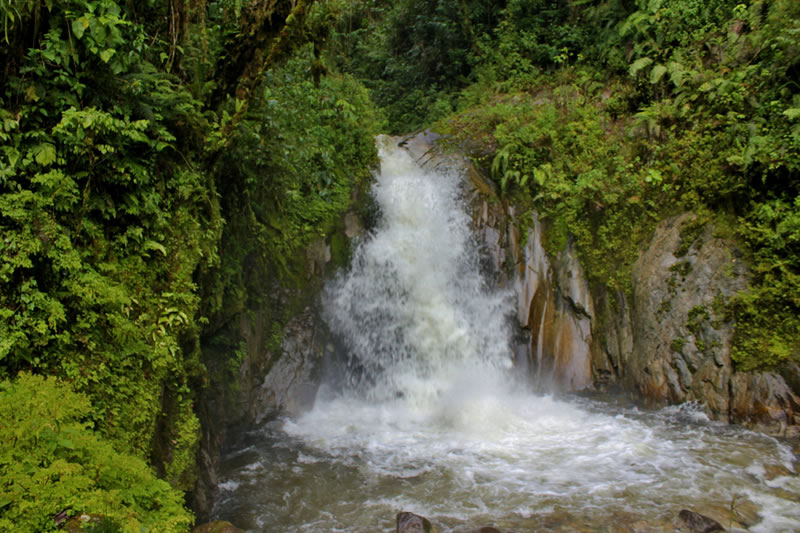Mandorpampa in Machu Picchu
Mandorpampa is a large plain, which is located on the left side of the Vilcanota River at an altitude ranging between 2,000 and 3,900 meters above sea level (masl). This enchanting place encompasses a part of the cloud forest of the Urubamba mountain range. Satellite photos of this site have uncovered foundations of Inca constructions. This site was explored in 1987 by the National Institute of Culture (INC), in these excavations found foundations of various buildings that apparently corresponded to an ancient population center that had the function of camp or base of operations during the construction of the Inca City of Machu Picchu.

Mandor waterfall
In this place there is a mysterious linear structure similar to a wall, 1,075 meters long and 2.50 meters wide. Its structure is irregular because the initial end measures about 4 meters, some sections are at ground level, but others reach up to 7 meters. It is called “Cercopata” and is oriented towards the Yanantin mountain. It was discovered in 1937 by archaeologist Heinrich Ubbelohde Doering and it is possible that it belongs to a gigantic geoglyph.
Location of Mandorpampa – Cusco
Mandor is an area located northeast of the Historic Sanctuary of Machu Picchu, at Km. 114 of the Cusco – Aguas Calientes railway line (Machu Picchu Pueblo), a 1 hour walk from the town of Aguas Calientes, following the banks of the Vilcanota River through beautiful landscapes of Amazonian jungle.
- District: Vilcabamba
- Province: La Convención
- Department: Cusco – Peru
- Latitude South: 13° 14′ 45.1” S
- Longitude West: 72° 58′ 58” W
- Altitude: 3,863 masl.
Historical data
Before the scientific discovery of Machu Picchu, a farmer named Melchor Arteaga told the American expeditionary Hiram Bingham about the existence of an ancient stone city where important Inca buildings could be found, which he found on the heights of the Machu Picchu hill, and that the only way to reach this place was by climbing through areas covered with dense vegetation.
On July 23, 1911, Hiram Bingham arrived in the Urubamba Valley through the vegetation of the Mandorpampa territory, so that on July 24, 1911 he arrived and rediscovered the Inca city of Machu Picchu.
Mandorpampa Hike
Enjoy the beautiful mountains, valleys, and rivers surrounding one of the world’s wonders. The Mandorpampa hike will allow you to appreciate the great diversity of flora and fauna of Machu Picchu, you will see begonias, bromeliads, ferns, shrubs, various native trees, mushrooms (of different colors and sizes) and fabulous orchids, among other species of plants (many of them endemic). During this hike, you will be accompanied by the songs of local birds such as parrots, hummingbirds, hummingbirds, hummingbirds, hummingbirds, and tarangas. Still, you can also observe more than 400 species of butterflies in the Historic Sanctuary of Machu Picchu.
After an hour’s walk you will arrive at the Mandor gardens, where you will find one of the best examples of flora and fauna of the Historical and Natural Sanctuary of Machu Picchu; likewise, give yourself the opportunity to see the “Mandor Waterfall”.
Mandor waterfall
It is a waterfall of approximately 30 meters, formed by a river of glacial origin, has crystal clear waters and flows into the Urubamba River, is located in the middle of dense vegetation that serves as a habitat for numerous species of plants and animals. This area is privately owned.
By Ticket Machu Picchu – Last updated, July 26, 2024